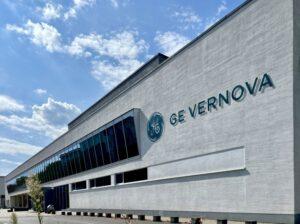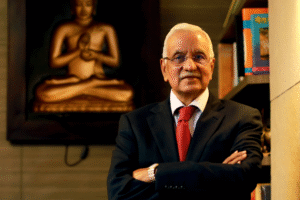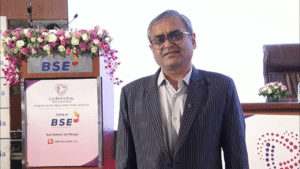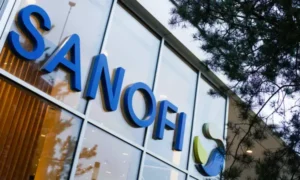The Jackson Hole Economic Policy Symposium isn’t just another conference of macroeconomic nerds.
It’s where global monetary policy signals such as lower interest rates often take flight.
💵💰Don’t miss the move: Subscribe to TheStreet’s free daily newsletter💰💵
This year’s optics are especially flashy.
With U.S. inflation still sticky and the labor market cooling, Federal Reserve Chair Jerome Powell’s Aug. 22 speech could well set the course for the future of interest rates well into 2026.
Related: Producer price inflation shocks Fed interest rate cut bets
It’s also expected to be the last time Powell addresses the invitation-only global gathering of central bankers, academics and macroeconomists as chair of the world’s largest and most respected independent central bank.
The guest list is expected to include attendees from the European Central Bank, Bank of Japan, Bank of England and more.
Why Wyoming?
Far removed from the media scrums of New York and Washington, the Grand Tetons offer delightful trout fishing and glorious natural beauty.
The Jackson Hole Economic Policy Symposium began in 1978, originally as a regional agricultural economics conference hosted by the Federal Reserve Bank of Kansas City.
Its profile transformed in 1982, when then-Kansas City Fed President Roger Guffey invited newly appointed Federal Reserve Chair Paul Volcker to speak; choosing Jackson Hole partly for its world-class trout fishing which Volcker famously enjoyed.
The symposium’s hallmark is its theme-based format, with each year focusing on a pressing global economic challenge, from inflation dynamics and financial stability to productivity growth and climate risks.
Related: Jobs report shocker resets Fed interest rate cut bets
Attendees from the top-secret guest list present research papers, engage in off-the-record policy debates and signal potential policy shifts to markets.
Over the decades, Jackson Hole has been the backdrop for some of the most consequential moments in global monetary history:
- 2010: Then-Fed Chair Ben Bernanke signaled a second round of quantitative easing, sparking a major bond rally and shifting market expectations worldwide.
- 2014: Mario Draghi, president of the European Central Bank, hinted at aggressive stimulus measures to combat Europe’s sluggish growth, a move that reverberated through currency markets.
- 2020: Powell unveiled the Fed’s new “average inflation targeting” framework, allowing inflation to run above the 2% goal temporarily to support stronger employment growth.
These moments cemented the symposium’s reputation as the sterling stage where subtle policy hints can trigger outsized reactions in global markets.
This year’s theme could not be more timely
This year’s topic is “Labor Markets in Transition: Demographics, Productivity, and Macroeconomic Policy.”
How appropriate for Powell.
The latest U.S. economic crosscurrents display sticky inflation which may or may not be the result of tariff inflationary pressures and a softening of the labor market thought to be a signal of tighter immigration policies and increasing AI impacts on entry-level college jobs.
Thus his Aug. 22 speech is not only seen as a defining moment of his leadership but as a signal whether U.S. monetary policy is about to enact a critical pivot toward the first interest rate cuts of the year.
More Federal Reserve:
- GOP plan to remove Fed Chair Powell escalates
- Trump deflects reports on firing Fed Chair Powell ‘soon’
- Former Federal Reserve official sends bold message on ‘regime change’
Fed officials are split this summer. Some, citing economic fragility, urge a rate cut to shore up the labor market. Others argue that inflated prices, especially porous tariffs and service-sector pressures, warrant caution before easing policy.
President Trump has no such qualms. He has been demanding a 3% cut in the current benchmark Federal Funds Rate of 4.25% to 4.50% in escalating criticisms and threats against Powell and even the 12-member policymaking Federal Open Market Committee.
In addition to policy, Powell may need to defend the Fed’s independence amid mounting political pressure from Trump, who is reportedly considering a double-digit list of successors for the chair role.
Top 5 things to watch at Jackson Hole 2025
1. Powell’s Policy Tone
Grab the popcorn.
Let’s all agree that Powell’s speech on Aug. 22 will be the main event.
Analysts expect a cautious but potentially dovish tilt, with markets betting on a .25% rate cut in September.
Any hint of a faster or larger move could rattle bonds, stocks, and currencies.
2. Inflation vs. Labor Market Debate
Expect sharp divisions between inflation hawks and labor-market doves.
Vice Chair Michelle Bowman and Fed Governor Christopher Waller have called for early cuts.
Kansas City Fed President Jeff Schmid wants more proof that inflation is contained before easing up.
3. Global Central Bank Signals
The European Central Bank, Bank of Japan and Bank of England often use Jackson Hole to telegraph shifts in policy to their constituents.
ECB President Christine Lagarde is expected to weigh in on Europe’s own slowdown, while BoJ Governor Kazuo Ueda may address the yen’s recent slide.
4. Academic Papers with Market Impact
The symposium’s theme of “Labor Markets in Transition: Demographics, Productivity, and Macroeconomic Policy” could produce research that reshapes expectations for wage growth, inflation trends and productivity gains.
5. Political and Geopolitical Undercurrents
Powell speaks under growing political pressure from Trump and his allies amid trade tensions that could fuel inflation for years to come.
Any reference to the Fed’s independence will be closely watched for signs of pushback against political influence.
Note: No word yet on Powell’s stance on trout fishing.


















